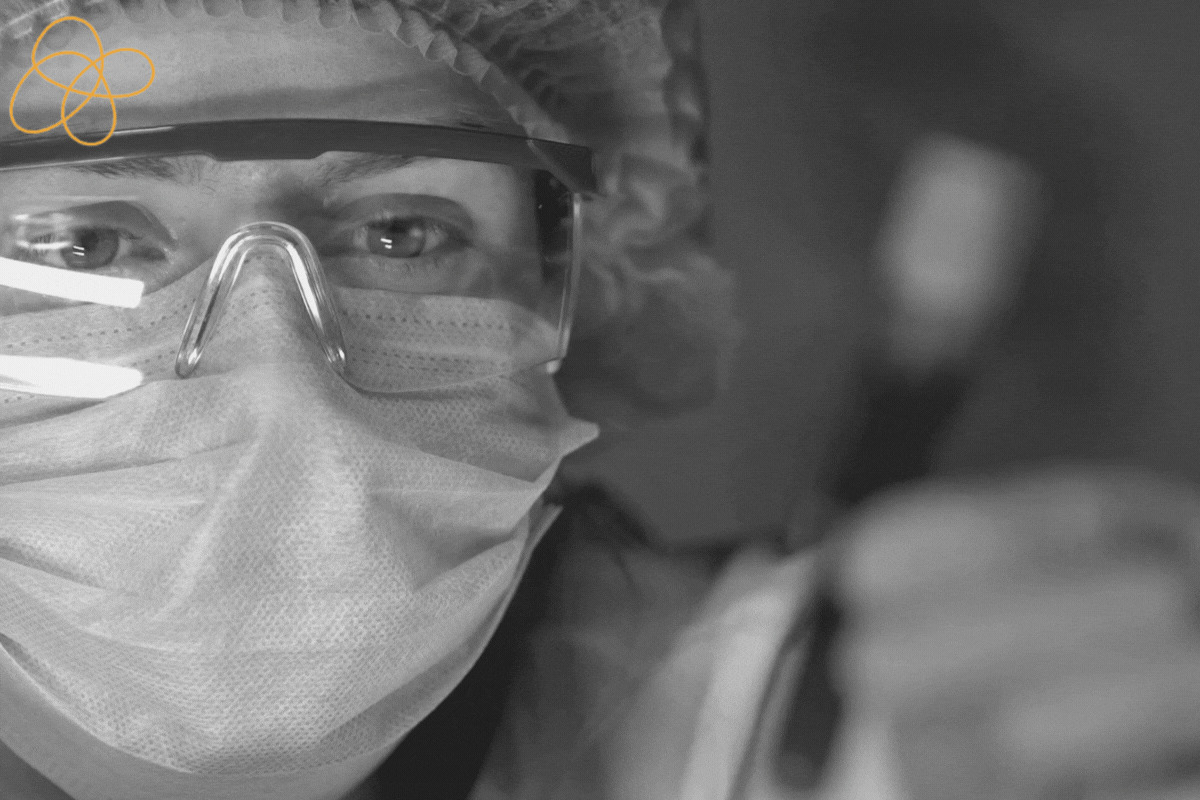Navigating the Challenges of Bioburden Control in Aseptic Manufacturing
Aseptic manufacturing is a critical process in the pharmaceutical industry, ensuring that therapeutics remain free from microbial contamination during the production process. Bioburden control, the process of keeping microbial load to a minimum, is at the heart of aseptic manufacturing. However, navigating the myriad challenges that surround this area can prove to be a daunting task. This article will explore these challenges and discuss various strategies to mitigate them.
Understanding Bioburden
Before we dive into the challenges, it’s crucial to understand what bioburden is. Bioburden refers to the number of bacteria living on a surface that has not been sterilized. It does not usually cause harm to healthy individuals, but in vulnerable patients, especially those with compromised immune systems, it can lead to serious infections. Therefore, controlling bioburden is paramount in aseptic manufacturing.
Challenges in Bioburden Control
Human Error: Perhaps the most substantial and unpredictable challenge in bioburden control is human error. The risk of contamination increases significantly with human interaction. Despite the use of protective equipment and rigorous protocols, microorganisms can still be introduced into the environment, thus compromising the aseptic process.
Environmental Factors: Bioburden control is about managing the production process and maintaining the manufacturing environment. Fluctuations in temperature, humidity, and air quality can all contribute to increased bioburden levels.
Equipment Design: Some designs of manufacturing equipment may harbor ‘dead spots’ where sterilization is challenging, leading to the potential accumulation of microorganisms.
Raw Materials: Another significant challenge is the control of bioburden in raw materials. Ensuring that these materials are not already contaminated before they enter the manufacturing environment can be difficult but is vital to maintain asepsis.
Strategies for Navigating Bioburden Challenges
Training and Education: Regular training and reinforcement of good manufacturing practices (GMPs) can minimize human error. This training should not only cover the practical aspects but also help the personnel understand the ‘why’ behind the procedures to enhance compliance.
Environmental Monitoring: Implementing a robust environmental monitoring program is vital for effective bioburden control. Regular monitoring and testing for potential contaminants allow for early detection and swift remediation.
Design for Sterilization: Equipment should be designed with sterilization in mind, ensuring there are no ‘dead spots’ that could harbor microorganisms. Regular equipment maintenance and cleaning schedules also contribute significantly to reducing bioburden levels.
Rigorous Raw Material Testing: Employing rigorous raw material testing protocols ensures that contaminated materials do not enter the production process. Suppliers should be stringently vetted, and materials should be tested upon delivery.
Understanding Bioburden and its Impact
Bioburden includes bacteria, yeasts, molds, and other microorganisms that may be present in raw materials, equipment, personnel, and the manufacturing environment. If not properly controlled, these microorganisms can multiply and contaminate the final product, compromising its quality and safety.
Controlling Bioburden during Aseptic Manufacturing
Facility Design and Environmental Monitoring: A well-designed manufacturing facility with controlled environments is the first line of defense against bioburden. The use of proper cleanroom technologies, such as HEPA filters, laminar airflow, and pressure differentials, helps minimize the entry and spread of contaminants. Regular environmental monitoring, including air and surface sampling, is crucial for detecting and addressing potential sources of bioburden.
Sterilization and Disinfection: Effective sterilization and disinfection protocols are critical to eliminate or reduce bioburden. Sterilization methods, such as steam, dry heat, and gamma irradiation, should be validated and implemented appropriately based on the product and process requirements. Disinfection of surfaces, equipment, and personnel using suitable disinfectants should be performed diligently and regularly.
Personnel Training and Gowning Practices: Human operators are potential carriers of bioburden. Proper training on aseptic techniques, gowning procedures, and hygiene practices is essential to minimize the risk of introducing contaminants into the manufacturing process. Regular training updates and adherence to strict gowning practices, including the use of sterile gloves, masks, and gowns, are vital to prevent microbial contamination.
Raw Material Control: Raw materials, including components, excipients, and media, can introduce bioburden into the manufacturing process. Thorough qualification and testing of raw materials for microbial contamination before their use are essential. Supplier audits and quality agreements can help ensure that raw materials meet the required standards for bioburden control.
Process Validation and Monitoring: A robust process validation program is crucial to ensure the efficacy of aseptic manufacturing processes. Monitoring critical process parameters and key performance indicators can help identify potential deviations or areas of concern promptly. Regular review and analysis of process data can aid in optimizing processes and preventing bioburden-related issues.
Contamination Control Strategy: Establishing a comprehensive contamination control strategy is vital for bioburden control. This includes defining critical control points, implementing standard operating procedures, conducting risk assessments, and establishing corrective and preventive actions. Continuous improvement through regular audits and assessments is essential to ensure the effectiveness of the strategy.
Does Bioburden only affect Aseptically Filled Products?
While bioburden control is often associated with aseptically filled products, it is not solely restricted to them. In fact, bioburden is a critical consideration for any manufacturing process where microbial contamination could negatively affect the quality, safety, or functionality of the final product. This includes non-sterile pharmaceuticals, medical devices, cosmetics, and even food and beverage manufacturing.
In the case of non-sterile pharmaceuticals, although these products do not require absolute sterility, they must still be controlled for bioburden to prevent significant microbial contamination that could affect product safety and efficacy. For instance, certain bacteria can degrade active pharmaceutical ingredients, altering the potency or even producing harmful byproducts.
When it comes to medical devices, those that are not designed to be sterile can also be affected by bioburden. Any microbial contamination on these devices could potentially introduce pathogens to patients, leading to infections. Therefore, it’s essential to control and minimize bioburden, even on non-sterile medical devices.
In cosmetics, high bioburden can lead to product spoilage and reduced shelf life. Some microorganisms can even cause skin irritations or infections. As a result, cosmetic manufacturers need to implement bioburden control measures in their processes.
Similarly, in food and beverage manufacturing, bioburden is a major concern as it directly affects product safety and shelf life. Microbial contamination can cause food spoilage and potentially serious foodborne illnesses.
So, while bioburden control is a key aspect of aseptic manufacturing, it plays a crucial role in other manufacturing areas as well. Regardless of the sector, managing bioburden effectively is a fundamental part of ensuring product quality and consumer safety.
Regulations and Guidances to follow for Bioburden
When it comes to bioburden control in the pharmaceutical industry, there are several internationally recognized guidelines and regulations that companies should adhere to. These guidelines offer comprehensive insights into the necessary steps for effective control of bioburden throughout the manufacturing process.
- ISO 11737: This is an international standard that specifies the methods for determining the population of viable microorganisms on medical products, components, raw materials, and packages. It also describes the process for calculating bioburden data.
- United States Pharmacopeia (USP): The USP offers multiple chapters that deal with bioburden control, most notably USP <1111> Microbiological Examination of Nonsterile Products: Acceptance Criteria for Pharmaceutical Preparations and Substances for Pharmaceutical Use, and USP <1115> Bioburden Control of Nonsterile Drug Substances and Products. These chapters provide guidance on testing methods, frequency, and acceptance criteria for bioburden in various pharmaceutical settings.
- European Pharmacopeia (Ph. Eur.): The Ph. Eur. contains specific chapters relevant to bioburden control, such as 5.1.8 “Microbiological Quality of Non-sterile Pharmaceutical Preparations and Substances for Pharmaceutical Use”, which details the tests to apply to non-sterile pharmaceuticals for determining their microbiological quality.
- The Parenteral Drug Association (PDA) Technical Report No. 13: This report offers guidance on achieving the fundamental environmental control necessary to ensure that a cleanroom functions effectively in reducing bioburden.
- FDA Guidance: The U.S. Food and Drug Administration (FDA) provides guidelines on various aspects of bioburden control in both non-sterile and sterile pharmaceutical manufacturing environments. The FDA’s “Guidance for Industry: Sterile Drug Products Produced by Aseptic Processing — Current Good Manufacturing Practice” is a critical document to follow.
- The European Medicines Agency (EMA): The EMA has several guidelines that address bioburden control, including their “Guideline on Sterile Drug Products Produced by Aseptic Processing,” which discusses contamination control in sterile environments.
Regulations and guidance documents provide manufacturers with essential guidelines and requirements for controlling bioburden in various industries, including pharmaceuticals, medical devices, and biotechnology. While specific regulations may vary by region, the following are some widely recognized regulations and guidance documents related to bioburden control:
- Good Manufacturing Practices (cGMPs): In the pharmaceutical industry, adherence to cGMP regulations is essential. These regulations, enforced by regulatory bodies such as the U.S. Food and Drug Administration (FDA) and the European Medicines Agency (EMA), provide comprehensive guidelines for manufacturing, testing, and quality control of pharmaceutical products. They include specific requirements related to bioburden control in aseptic processing.
- ISO 13408: Sterilization of Health Care Products – Aseptic Processing of Health Care Products: This international standard provides guidelines for the validation and operation of aseptic processing of healthcare products. It covers a wide range of topics, including facility design, environmental monitoring, sterilization methods, personnel training, and process validation, all of which contribute to effective bioburden control.
- USP General Chapters <61> and <62>: The United States Pharmacopeia (USP) has established General Chapters <61> and <62> to provide specific guidance on microbial enumeration tests for non-sterile products (Chapter <61>) and microbial limits tests for sterile products (Chapter <62>). These chapters outline the methods, acceptance criteria, and considerations for bioburden testing and control in pharmaceutical products.
- FDA Guidance for Industry: Sterile Drug Products Produced by Aseptic Processing – Current Good Manufacturing Practice: This FDA guidance document provides detailed recommendations for controlling bioburden in the manufacture of sterile drug products using aseptic processing. It covers various aspects, including facility design, personnel training, environmental monitoring, sterilization, validation, and quality control.
- European Medicines Agency (EMA) Guideline on Sterilization: This guideline offers specific recommendations for the sterilization of medicinal products, including aseptic processing. It provides guidance on selecting appropriate sterilization methods, process validation, and control of bioburden in aseptic manufacturing.
International Society for Pharmaceutical Engineering (ISPE) Baseline® Guide
Volume 4: Water and Steam Systems: This guide, published by ISPE, provides comprehensive information on the design, operation, and control of water and steam systems used in pharmaceutical manufacturing. It includes guidance on controlling bioburden in water systems, which can be a potential source of contamination.
It is important for manufacturers to stay updated with the latest regulations and guidance documents specific to their region and industry. These regulations and guidelines serve as valuable references for implementing effective bioburden control strategies and ensuring compliance with regulatory requirements.
Remember, regulations can vary from one region to another, and it is crucial to comply with the standards applicable to the specific geographical locations where the products are manufactured and sold. Additionally, these guidelines are continually being updated and revised to incorporate the latest scientific understandings and technological advancements. Therefore, companies must stay abreast of these changes to ensure compliance with the most current regulations.
Some Typical Questions around Bioburden to discuss with the FDA
When it comes to discussing bioburden control with the U.S. Food and Drug Administration (FDA), it’s essential to keep in mind that their primary concern is ensuring patient safety and product quality. This often leads to questions about your practices, processes, and quality controls. Below are some common questions that companies might discuss with the FDA:
- Sampling and Testing: What are the strategies for bioburden sampling and testing? How often is testing performed, and what methods are being used?
- Method Validation: How is the validation of bioburden testing methods performed? Are these methods consistent with ISO 11737 or other recognized standards?
- Raw Materials: How is bioburden in raw materials controlled and monitored? What steps are taken if contamination is detected in these materials?
- Environmental Control: How is the manufacturing environment maintained to minimize bioburden? What monitoring systems are in place?
- Personnel Training: What kind of training is provided to staff involved in the manufacturing process? How often is this training reinforced?
- Equipment Design and Maintenance: Are there measures in place to ensure equipment is designed and maintained to avoid microbial contamination?
- Discrepancy and Out-Of-Specification (OOS) Handling: How are discrepancies in bioburden control handled? What measures are in place for handling Out-Of-Specification results?
- Risk Assessment: What are the potential risks associated with bioburden in your manufacturing process, and how are they mitigated?
- Quality Assurance: How is the Quality Assurance team involved in overseeing bioburden control?
- Change Control: How is change control managed in terms of any changes to the processes, equipment, or environment that might impact bioburden?
The key to successful communication with the FDA is to be prepared, transparent, and able to provide scientifically sound data and explanations for your processes and procedures. It’s also essential to stay updated on the latest regulations and guidance documents from the FDA regarding bioburden control.
In Conclusion
Navigating the intricate landscape of bioburden control in aseptic and non-aseptic manufacturing isn’t just a regulatory requirement—it’s a moral imperative. It’s not solely about ticking boxes and adhering to guidelines; it’s about ensuring the absolute safety of the products we deliver to millions of consumers worldwide. From raw material testing to personnel training, from environmental monitoring to equipment design—each cog in this complex machine plays an integral role in ensuring patient safety. As manufacturers, we need to embrace the challenges, rigorously apply the regulations, and strive for continuous improvement. A complacent approach to bioburden is a gamble with human lives—a risk we simply cannot afford to take. The quality of our products—and the health of those who rely on them—hangs in the balance.






